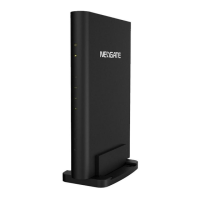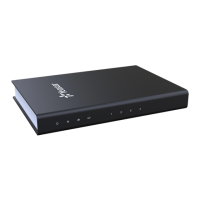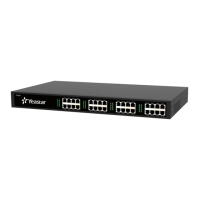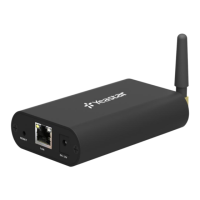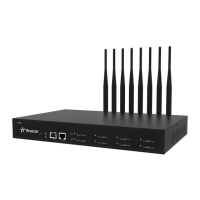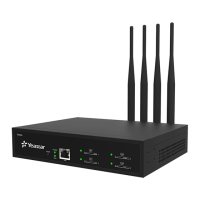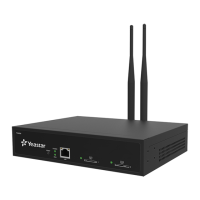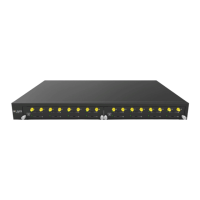TA400/800 User Manual
24/64
Please refer to RFC1918 for more information.
Global NAT configuration for the system; the options for this setting are as
follows:
Yes = Use NAT. Ignore address information in the SIP/SDP headers and
reply to the sender's IP address/port.
No = Use NAT mode only according to RFC3581.
Never = Never attempt NAT mode or RFC3581 support.
Route = Use NAT but do not include rport in headers.
By default, the system will route media steams from SIP endpoints
through itself. Enabling this option causes the system to attempt to
negotiate the endpoints to route packets to each other directly, bypassing
the system. It is not always possible for the system to negotiate
endpoint-to-endpoint media routing.
3) Qos
QoS (Quality of Service) is a major issue in VoIP implementations. The issue is how
to guarantee that packet traffic for a voice or other media connection will not be
delayed or dropped due interference from other lower priority traffic. When the
network capacity is insufficient, QoS could provide priority to users by setting the
value.
Figure 5-6 Qos
Note: It’s recommended that you configure the QoS in your router or switch instead of
TA FXS Gateway side.
4) Response Code
You can change the response code on TA FXS Gateway to the one you want before
sending it to the VoIP server. It helps the VoIP server understands better the exact call
status, like busy, no response and others.
Figure 5-7 Response Code
Note: We don’t’ recommend configuing this if you are not familiar with the code of call
status from the VoIP server.
